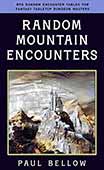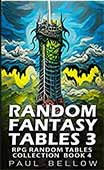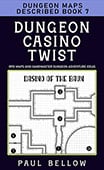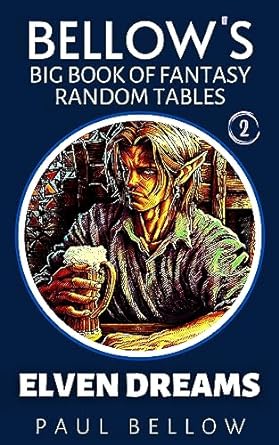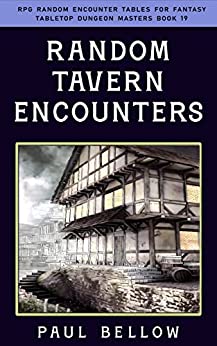Welcome to the Forgotten Realms—where legends aren’t just told, they’re lived.
In this high-fantasy playground, gods walk the streets, archmages reshape reality, and kingdoms rise or fall on the roll of a die. From the smoldering ruins of ancient empires to the shadowy intrigues of Waterdeep’s masked lords, the Realms are alive with danger, drama, and destiny.
For Dungeon Masters, this isn’t just background noise—it’s fuel. These iconic historical events aren’t dusty entries in a lorebook; they’re the beating heart of the Realms. They shape your NPCs, influence your villains, and whisper secrets into your players’ quests.
Whether you’re crafting a campaign set in the chaos of the Spellplague or the political fallout of the Sundering, knowing the Realms’ history means you’re not just running a game—you’re writing the next chapter of a saga that spans millennia.
The Forgotten Realms is more than just a backdrop; it’s a living, breathing world that has gone through multiple ages. Each era shaped by divine hands, powerful magic, and the dreams and deeds of its heroes. From the primordial Days of Thunder to the modern Age of Humanity, the Realms offer stages for epic tales. Each age presents its own rich setting and flavor, helping DMs set the scene whether they wish to dive into ancient ruins or navigate the complex politics of city-states.
For new DMs, becoming acquainted with the history of the Forgotten Realms can feel daunting, yet it’s immensely rewarding. Understanding major historical events allows for more nuanced world-building and enables a more profound engagement with the world. By grounding your campaign in this rich history, you not only delight seasoned players familiar with the lore but also offer depth to newcomers. Think of it as giving a guided tour through a world as varied and intricate as our own.
The Forgotten Realms has evolved through many ages, each bringing significant shifts and changes. From the rise of legendary empires to catastrophic events that altered the world’s fabric, these ages mark periods where new power dynamics are forged and civilizations are born anew. By diving into these epochs, you become more than a mere storyteller. You become a chronicler of legend, shedding light on the mysteries of a world where the past constantly influences the present with monuments to long-lost kingdoms, persistent cults, and whispered prophecies.
Try my AI Tabletop RPG generators...and an extensive library of content!
So grab your d20, sharpen your plot hooks, and let’s delve into the epic events that make the Forgotten Realms unforgettable.
The Ages of the Forgotten Realms
Time in the Forgotten Realms isn’t just a linear progression. It swells like a tide, influenced by cataclysmic events, epic heroics, and divine machinations. The Ages of the Forgotten Realms — The Days of Thunder, The Dawn Ages, The Age of Humanity, and The Present Age — each represent profound shifts in the world, echoing across centuries. The Realms, with its monumental events and chronicle of moments, ensures each age marks a distinct chapter in its history.
In the earliest epochs, The Days of Thunder, creation unfolded in a tapestry woven by primordial forces. Titans and dragons roamed the lands, carving the very landscapes with their might. This period set the stage for the emergence of the great creator races and magic that would define the fabric of reality in the realms to come. It was an era of untamed wilds, where the foundations for civilizations were laid, shaping the world into its current form.
The subsequent age, The Dawn Ages, witnessed the ascent of these civilizations. Kingdoms rose, brandishing the newfound power of harnessed magic. It was during this time that empires like Netheril flourished, reaching unprecedented heights before their inevitable decline. Mystical cities like Myth Drannor emerged as beacons of knowledge and culture, while others, like Imaskar, chose isolation and secrecy, sowing seeds for future conflicts.
The Age of Humanity marked a poignant transition where humankind emerged as a dominant force, shaping the realms with their ambition and innovation. This period saw the fragmentation of mighty empires, making way for a diverse tapestry of cultures and kingdoms. It was an age of great exploration, daring adventures, and profound magic. It laid the groundwork for the Realms as we know them, highlighting both the triumphs and follies of its inhabitants.
⚔️ Fantasy RPG Random Tables Books
Make life as a Gamemaster easier…
If you play Dungeons & Dragons, Pathfinder, or other fantasy RPGs, this
RPG random tables series
is packed with encounters, NPCs, treasure, and more. Available in eBook or print—either way, you’ll have a wealth of adventure ideas at your fingertips.
- The fall of mighty Netheril, brought low by hubris.
- The rise of the storied city of Myth Drannor.
- The Time of Troubles, when gods walked the earth.
- The titanic battles between dragons in ancient times.
- The establishment of powerful mageocracies.
- The fragmentation and unity of the Dales.
- The Weeping War that marked the end of Myth Drannor.
- The war of the Silver Marches.
- The founding and fall of the first Mulhorand Empires.
- The Crown Wars between the elven nations.
- The Sacking and rebuilding of Baldur’s Gate.
- The shifting Astral borders after the Sundering.
As we arrive at The Present Age, the realm is a living palimpsest, built layer upon layer of its storied past. The events and epochs prior have shaped its politics, its culture, and its conflicts. Understanding these ages gives you, the DM, the ability to position your campaign in an era that suits your narrative style. A romp through the tumultuous days of early Myth Drannor? The intrigue of the present with all its guild politics and trade wars? With knowledge, the possibilities are endless, and the stories you choose to tell will be that much richer for it.
In conclusion, the ages of the Forgotten Realms serve as more than mere backgrounds; they are the heartbeat of a living world. By grounding your campaign in these ages, your players will feel the weight of history, the ever-present echoes of past glories and tragedies. As a DM, knowing these eras aids in creating a world that feels alive, reflecting the ongoing interplay between history and the present. It’s all about crafting a story that resonates with the epic sweep of forgotten tomes, leaving players wondering what part they will play in history’s unfolding.

Cataclysms and Game-Changing Events
The world of the Forgotten Realms is one where the line between the mortal and the divine often blurs, where cataclysms, be they magical or divine, are capable of reshaping both geography and fate. Unlike many settings, where history is a gentle stream, the Realms are more like a turbulent ocean with waves that can grow into towering tsunamis of change. These large-scale events have the power to make or break the Realms, resetting the stage and renewing the world in ways that are as exciting as they are unpredictable.
Imagine this: a sudden celestial alignment causes magic to falter, or a squabble among deities culminates in a celestial showdown that leaves nations in ruin. It is these dramatic cosmic occurrences that lend the Realms their infinite charm and unpredictability. For players and DMs alike, such events create a dynamic world where nothing is ever quite the same, where the deeds of heroes and the whims of gods can alter the fate of all.
These cataclysms aren’t just background noise; they’re central to the plot and flavor of the Realms. From the perspective of storytelling, they offer a unique chance to jump into ever-evolving narratives. Players might strive to restore magic, explore new lands, or thwart villainous plots exacerbated by the chaos. To a DM, these events present an opportunity to drive comprehensive story arcs, mixing intrigue with action, and turning the world itself into a protagonist that rivals the heroes in complexity.
Among such cataclysms, few hold as much sway over the Realms as the Time of Troubles and the Spellplague. Events like these serve not just as chapter markers in history books but as turning points that redefine the rules of the world. The Time of Troubles, a time when gods were cast down to walk the earth, shook the celestial foundations and altered the divine landscape forever. While the Spellplague, an arcane calamity, reshaped magic itself, rewriting the very laws of reality. Each event redefined the Realms, offering new realms for exploration and proving that here, the past is always prologue.
The Time of Troubles
The Time of Troubles, a period cloaked in myth and uncertainty, stands as a monument to the delicate balance between the divine and mortal realms. For a moment, the gods themselves were forced to walk among mortals, their powers diminished, their avatars vulnerable to the whims of chance and human folly. This cataclysmic event unfolded in a way that left an indelible mark on the world, altering the landscape of faith and magic forever.
Imagine gods treading on the very soils they preside over—a humbling experience for any deity. For humans, it provided a rare opportunity to witness the divine humbled, to converse with beings of unimaginable power as they sought to reclaim their celestial thrones. With magic faltering and faith questioned, chaos reigned across the lands. Cities fell to ruin, temples became battlegrounds, and factions shifted as new religious orders rose to fill the void left by fallen gods.
Key figures rose to prominence during this era of divine uncertainty. The goddess Mystra, traditionally the guardian of arcane forces, found herself stripped of her powers, vulnerable to mortal machinations. Her struggles culminated in an epoch-defining moment, shaping the path of magic for millennia hence. Meanwhile, the dark god Cyric saw opportunity in chaos, betraying allies and ascending to power in the aftermath of deceit and intrigue.
- The death of Mystra, leading to wild surges in magic.
- The rise of Cyric as a major deity.
- The fall of Baal, the Lord of Murder.
- The temporary avatar of Tyr the Just, which influenced new legal codes.
- The appearance of mortal heroes who would become ascended beings.
- Mystra’s new Chosen arising to guide the arcane.
- The rebirth of Torm, the god of duty and loyalty.
- Beshaba and Tymora’s rivalry intensifying over fading luck.
- The shift in power dynamics among demons and devils.
- The rediscovery of the true force behind Tymora, the goddess of good fortune.
But here’s the thing: The Time of Troubles wasn’t just about divine games and cosmic chess. It redefined how the world approached magic, divinity, and mortal ambition, positioning them within a tangled web of influence and consequence. It served as a wake-up call that even the heavens are not immune to drama and change. For DMs, this event provides fertile ground for exploring themes of faith, power, and the cost of divine intervention.
In your campaigns, let this event be remembered as a lesson and a warning. A pivotal turning point, the Time of Troubles should echo throughout the ages, reminding adventurers of the powers they seek to control and the unseen order that binds their world. It stands as a testament to the fragile interstice between the known and unknown, where heroics and hubris go hand in hand, leaving marks on history that guide or haunt generations to come.
⚔️ Fantasy RPG Random Tables Books
Make life as a Gamemaster easier…
If you play Dungeons & Dragons, Pathfinder, or other fantasy RPGs, this
RPG random tables series
is packed with encounters, NPCs, treasure, and more. Available in eBook or print—either way, you’ll have a wealth of adventure ideas at your fingertips.
The Spellplague
The Spellplague, a cataclysm of wild arcane energy, tore through the Realms, altering the very fabric of magic and reality as they were known. Triggered by the death of Mystra, the goddess of magic, it ushered in an era of unpredictable change and unending chaos. Imagine the sudden collapse of the world’s arcane infrastructure, like an intricate web, swiftly unraveling to reveal infinite possibilities and endless dangers. The once-certain laws governing the arcane arts no longer applied, pushing the world into an era of startling evolution.
Driven by the arcane chaos, the Blue Fire raged across the lands, transforming everything it touched. Lands shifted, seas rose, and cities crumbled into the dust. As the geography itself morphed, the Realms became a landscape of innervation and rebirth. Those directly affected—dubbed the Plaguechanged—became living testaments to the unpredictability of this dreadful event, manifesting unnatural powers that belied the boundaries of traditional magic. In the chaos, new species emerged, and interdimensional rifts flickered into being, merging the twin worlds of Abeir and Toril.
The eruption of the Spellplague drove wizards to the edge of their abilities, forcing them to either adapt or succumb to the devastation—a crucible that refined or shattered those who dared wield magic. The reverberations of this seismic event shattered nations and destabilized empires, thrusting them into an uncertain future. Yet, amid the destruction, seeds of rebirth were sown as new magic systems emerged, configured to operate within the post-plague paradigm. Magic, though altered, found resilience in its malleability.
| Location | Effects of the Spellplague | Lingering Consequences |
|---|---|---|
| Halruaa | Submersion in the ocean | Reintegration with a new pantheon |
| Luskan | Magic veils tearing | Rise in arcane piracy |
| Amn | Sudden outbreaks of magical fires | Increased merchant guild power |
| Thay | Internal magical conflicts | Power shift towards necromancy |
| Rashemen | Wild magic zones | Empowered nature spirits |
| Chult | Dense jungles overrun with new species | Ruins of former settlements |
| Unther | Territory displacement to Toril | Cultural amalgamation |
| Mulmaster | Market collapse | Rise of black-market trades |
| Dalelands | Towns vanished or moved | Emergent new trade routes |
| Cormyr | Borders expanded | Increased noble conflict |
Controversial as it might be among fans, the Spellplague is a veritable treasure trove of storytelling material. It offers the opportunity for exploration, discovery, and the ever-looming threat of unpredictable change. The repercussions of this cataclysm still echo across the Realms, reshaping societies and the understanding of magic itself. For DMs, the Spellplague provides a rich narrative landscape—to echo the past, explore the unknown, and shape campaigns with the unpredictable edge of magic at its core.
The Spellplague remains a sprawling narrative expanse, ripe for storytelling. Embrace its chaotic potential, its transformative power, and invite your players to navigate a world reborn in arcane flames. Explore moments where new arcane mysteries await discovery and where explorations into the consequences of magical disruption continue to ripple through the Realms, inviting ingenious solutions and daring adventures.
The Sundering
The Sundering, a grand event that sought to “reboot” the Realms, returned the world to a semblance of its former glory, mending the fractures wrought by prior cataclysms. A cosmic reset button, it separated the twin worlds of Abeir and Toril, restoring ancient magics and halting the unchecked chaos of the Spellplague. Picture this: a return to equilibrium as magic once more stabilized, ancient pantheons reawoke, and a semblance of order was restored to a more confident world.
In this epochal event, old boundaries were re-established, and the fabric of reality stitched together the multitude of divergent timelines created by prior disruptions. New stories, both in novels and sourcebooks, explored the resurgence of cities long presumed lost and the consequences of pantheons realigned. Legendary cities, like Myth Drannor, experienced a renaissance of glory, while once-untouchable gods regained their celestial mantles. Power dynamics shifted as familiar faces returned, drawing new political boundaries and igniting fresh rivalries and alliances.
Try my AI Tabletop RPG generators...and an extensive library of content!
The Sundering was more than an act of divine will; it marked the conscious effort to balance the Realms and harmonize with the nostalgic echoes of D&D’s earlier editions. It acted as a bridge between editions, seamlessly knitting together old themes and new adventures, igniting a renewed love for the classic themes D&D fans cherished. Players and DMs were invited to explore lands filled with potential, reshaped by both recent upheavals and ancient legacies.
- The restoration of lost cities like Myth Drannor.
- The return of gods forgotten or believed vanquished.
- A reshuffling of political powers across Faerûn.
- The emergence of new alliance opportunities between nations.
- Re-establishment of older magical systems akin to pre-Spellplague use.
- The renewal of forgotten trade routes, infusing economies with new vitality.
- Shifts in divine portfolios as pantheons reasserted their influence.
- The stabilization of magical environments and artifacts.
- The emergence of heroes striving to reclaim lost legacies.
The Sundering re-kindled enthusiasm for the Realms among fans, proving that the stories of old still have their place within modern campaigns. DMs found in it a rich tapestry of lore that they could wield at will. It offered an opportunity to reforge the connections between gods, legends, and the land itself, affirming that the world remains a dynamic stage for high adventure and untold heroism.
For those crafting their stories, let the Sundering be a reminder of rebirth—an opportunity to chart a course through lands now ripe for discovery, where the past and present weave together, creating endless possibilities. Let your players write their own legacies, tread upon paths once walked by mighty heroes, and carve their legends within the world’s evolving narrative. Herein lies a bridge from history to destiny—a chance to walk between eras.
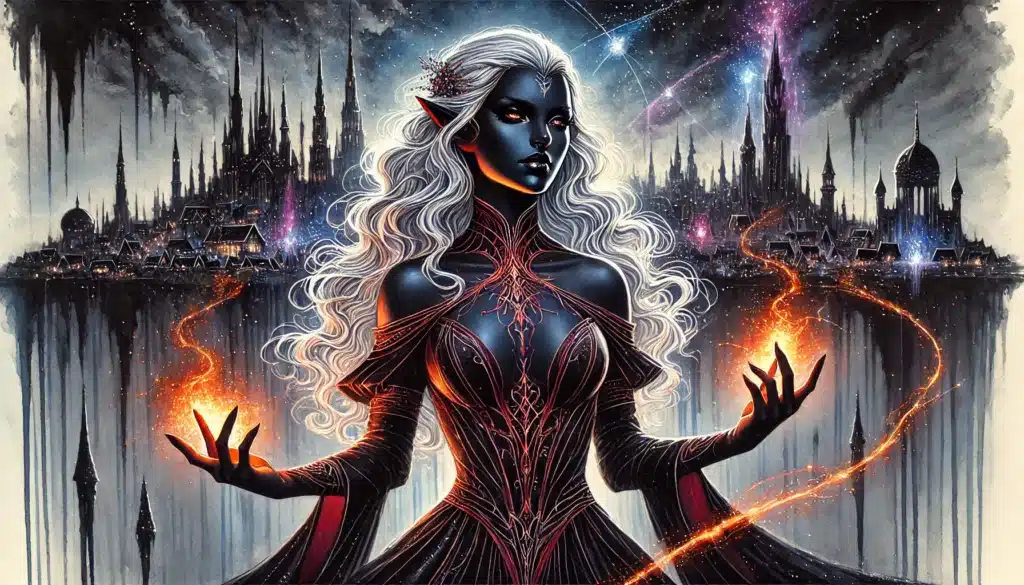
Legendary Figures of the Forgotten Realms
The vibrant tapestry of the Forgotten Realms isn’t just woven with mighty deeds and epic battles. Its essence is defined largely by the legendary characters who have walked its lands, characters whose tales inspire awe, serve as cautionary legends, or stand as puzzles for adventurers to solve. These figures are more than myth—they are real within the framework of the game, serving as aspirational or adversarial Non-Player Characters (NPCs) that can enrich any campaign.
The presence of such iconic figures—heroes, villains, gods, and folk legends alike—offers an added depth to storytelling within the Forgotten Realms. From the indomitable Elminster, the Sage of Shadowdale, who embodies the wisdom and mystery of ancient ages, to the formidable Larloch, the powerful lich who pulses with centuries-old malevolence, these characters lend their stories to the world, fostering intrigue, courage, or dread wherever they are invoked.
For DMs, incorporating legendary figures adds a rich dimension of flavor and engagement that beckons players to explore, interact, or even clash with these mythic beings. They can be used as historical references for campaign backstories or appear as living, breathing entities whose motives and actions directly influence the players’ quests. Discovering their tales, deciphering their motives, and uncovering long-held secrets can offer gratification akin to solving the deepest of riddles.
Here’s the thing: that episodic story arc? It needs a sprinkle of legendary magic now and then. Using these iconic characters with care, you avoid overshadowing the players while adding depth and dimension to the story. Employ these legendary figures judiciously, and they become bright jewels in your campaign’s crown, tantalizing and enhancing each narrative thread with scintillating flair.
| Character Name | Role | Region of Influence | Iconic Deeds |
|---|---|---|---|
| Drizzt Do’Urden | Hero | Icewind Dale | Renowned drow ranger, master swordsman |
| Elminster | Sage | Cormanthor | Prolific mage, advisor to kings |
| Larloch | Lich | North | Ancient undead sorcerer of immense power |
| Kelemvor | God | The Fugue Plane | God of the dead, former mortal |
| Cyric | Villain | Shadowfell | Betrayed many to ascend to godhood |
| Moradin | Deity | Dwarven Holds | God of Dwarves, master of creation |
| Mystra | Goddess | Realmwide | Guardian of the Weave, mistress of magic |
| Szass Tam | Necromancer | Thay | Red Wizard leader, necromantic power |
| Mirt the Moneylender | Guildmaster | Waterdeep | Wealthy adventurer, cunning strategist |
| Laeral Silverhand | Sorceress | Waterdeep | One of the Seven Sisters, archmage |
| Zariel | Archdevil | Avernus | Ruler of Avernus, fallen celestial |
| Gromph Baenre | Wizard | Menzoberranzan | Archmage of the Underdark |
| Halaster Blackcloak | Wizard | Undermountain | Mad Mage, creator of Undermountain |
| Fzoul Chembryl | High Priest | Moonsea | Zhentarim power, scheming priest |
| Khelben Arunsun | Archmage | Waterdeep | Founding member of the Harpers |
While these figures can offer incredible narrative momentum, consider them carefully. They should not steal the spotlight from the true stars: your players. Instead, let them serve as occasional guides or weighty adversaries. Offer the thrill of incidental encounters or whispers in the dark, ensuring the players’ interactions with these titans are memorable yet sparing.
Finally, when weaving these legendary figures into your story, use them as the enduring echoes of the Realms’ rich tapestry, creatures of narrative depth whose deeds and destinies enrich your setting. They provide color and life to the world, inviting players to explore and expand their understanding while crafting their sagas within the intricate mosaic of the Realms.

Gods, Pantheons, and Divine Influence
In the world of the Forgotten Realms, the divine is not some distant, abstract concept but rather a vibrant, immediate force woven into the very fabric of life and culture. The presence of gods and their intricate pantheons influence politics, nurture magic, and shape daily existence in profound ways. Whether you are a cleric drawing upon divine power in a moment of need, a paladin on a quest of holy significance, or even a rogue bargaining with mysterious divine patrons, the gods’ footprints can be seen across every aspect of mortal affairs.
From cities to wildernesses, from bustling markets to ancient ruins, the gods’ presence is ubiquitous, affecting not only the physical plane but also the arcane and spiritual. Everyone, from the humblest peasant to the mightiest king, acknowledges the gods’ dominion and the power held therein. The realm of the divine plays a role in nearly every adventure, offering a backdrop for quests driven by faith, divine scheming, and celestial mysteries.
For the enterprising Dungeon Master, the divine aspect of the Realms provides an expansive canvas on which to paint lush, imaginative stories. With worship poured into innumerable directions and the ever-shifting alliances between the gods, plots can be spun from heavenly conflicts, mortal struggles for divine favor, or holy quests undertaken in desperation or ambition. Understanding the gods’ intricate nature, their domains, and how they gain or lose power allows for narratives steeped in spiritual intrigue and celestial powerplays.
The fact is, whether as revered figures bestowing blessings, mysterious forces shaping destinies, or pivotal components within ancient prophecies, the gods’ presence enriches every campaign. It sets the stage for mortal heroes to step forth, embrace or rebel against their fated role, and carve out new legends in a world where the divine presence is as natural as breath.
The Role of the Gods
In the mystical world of the Forgotten Realms, gods embody concepts, elements, and ideals, overseeing various portfolios that grant them power through worship and belief. These divine entities, though ostensibly eternal, find their dominion fluctuating with the tides of mortal faith. Their ability to influence the world manifests through a mystical framework known as the Weave—overseen by Mystra, the goddess of magic herself. The gods, both benevolent and malevolent, use the Weave to realize their divine purposes, weaving destinies and reshaping the mortal realm.
Portrayed in religious texts, myths, and artifacts, the gods interact with mortals in diverse capacities. Some offer direct guidance as patrons and protectors, while others operate through dreams, whispers, or omens. Worship is their lifeblood, determining their influence and offering narrative opportunities to explore themes of faith, fate, and power in your campaign world. The more worshippers they have, the more potent their influence becomes.
The nature of gods and their divine portfolios is complex. Each deity converts their worship into tangible power that shapes the world around them. They embody ideals such as life, death, war, love, or trickery. Engaging with the divine apparatus of the Forgotten Realms reveals an intricate hierarchy—a cosmic balancing act where the acquisition or loss of worship significantly affects a deity’s power and influence. This dynamic creates opportunities for divine intervention in campaigns, affecting player choices and storylines.
⚔️ Fantasy RPG Random Tables Books
Make life as a Gamemaster easier…
If you play Dungeons & Dragons, Pathfinder, or other fantasy RPGs, this
RPG random tables series
is packed with encounters, NPCs, treasure, and more. Available in eBook or print—either way, you’ll have a wealth of adventure ideas at your fingertips.
- Mystra: Magic, Weave, invention, spells; revered by wizards and mages.
- Tyr: Justice, law, justice through might; ideal for paladins and judges.
- Lathander: Dawn, renewal, vitality; inspiring bards and priests.
- Lolth: Spiders, deceit, chaos; shaping drow societies and sinister ritual.
- Bahamut: Justice, protection, nobility; guides dragonborn and hammerites.
- Shar: Night, loss, forgetfulness; ominous for secretive, shadowy deeds.
- Selûne: Moon, dreams, illusions; revered by sailors and lycanthropes.
- Tempus: War, battle, glory; patron of battle-hardened warriors.
- Sune: Beauty, passion, love; artists, lovers and bards worship her.
- Moradin: Crafts, creation, family; dwarf communities value his wisdom.
- Gruumsh: War, conquest, survival; orcs worship him, epitomizing conflict.
- Oghma: Knowledge, invention, inspiration; scholars, sages, cavort in his wisdom.
- Torm: Duty, loyalty, righteousness; pious paladins aspire to his example.
Embrace the story possibilities from divine intervention, holy crusades, and prophecies invoked by the deities. Tangible divine conflict, where gods engage in power plays, can drive epic narratives and pull adventurers towards spiritual journeys, embroiled in their own confrontations between belief and morality. For skilled DMs, the divine is a playground rich with potential for storytelling that immerses players in a world where their faith may hold the key to fate.
By skillfully employing divine power and influence, you’ll deepen the player’s connection with their characters’ religion and personal motivations. When crafted thoughtfully and methodically, the divine can transform a simple campaign into a grand tapestry of religious enigma and revelation, balancing mortal and divine ambitions in a vibrant play of fate.
Divine Conflicts and Alliances
Divine rivalries and partnerships are a cornerstone of the celestial landscape in the Forgotten Realms. Gods often embroil themselves in an ever-shifting landscape of alliances, betrayals, and cosmic sagas that transcend mortal comprehension. As players step into these worlds, they discover the intricate interplay between divine factions that drive so much of what unfolds on the mortal plane. These battles and bonds among the gods can lead to powerful narrative arcs, inviting your players to navigate the treacherous path of divine politicking.
The cosmic drama in the Realms manifests in priesthood battles, ideological clashes, and theological debates that can ripple through the mortal world. Just as mortal ancestors were prone to discord and cooperation, so too are the gods. But it all plays out on a grand scale, resulting in intrigue, wars, and significant societal shifts. Adventurers may find themselves caught in the wake of a divine disagreement, struggling to appease warring deities, or perhaps swaying the decisions of a divine alliance.
Sometimes, these conflicts manifest as physical skirmishes between religious sects, some leading to full-blown holy wars where players can influence or hinder the fates of entire cities or regions. They can also operate as more cerebral campaigns of espionage and manipulation fraught with underlying tensions that boil over in unexpected ways. As a DM, it’s your artistry that bridges the mortal and divine, the seen and the unseen, illuminating the multi-layered interactions where truth is interwoven with myth.
| Divine Rivalry | Origin | Manifestation in the World |
|---|---|---|
| Bane vs. Mystra | Control over sorcerers | Conflict among mage guilds, sabotaged spells |
| Sune vs. Shar | Creation vs. destruction | Artistic conflicts, drama in artisan guilds |
| Gruumsh vs. Corellon | Elven superiority | Turqueful border skirmishes, lore twisting |
| Lolth vs. Eilistraee | Drow society split | Sect wars, cultural upheaval in drow cities |
| Talos vs. Selûne | Storm vs. peace | Unpredictable weather, celestial phenomena |
| Tempus vs. Helm | War vs. protection | Brawls, duels among knights and squires |
| Tyr vs. Cyric | Justice vs. chaos | Feuds among law practitioners, city politics |
| Helm vs. Lliira | Vigilance vs. joy | Restrictive policies, tranquility movements |
| Moradin vs. Dumathoin | Tradition vs. secrets | Clan disputes, hidden artifacts turning up |
| Umberlee vs. Kelemvor | Sea vs. death rites | Tension between sailors and clerics |
Divine conflicts need not be always widespread to be impactful; they can be as intimate as a whispered secret between clergy or as grand as a celestial war shaking the foundations of heaven and earth. As a DM, divine plotting can offer unique opportunities for asymmetrical storytelling. Differences in religious ideology highlight cultural richness and moral grey areas that place your players at crossroads, allowing their decisions to shape the course of history, whether they act longingly in pursuit of righteousness or succumb to darker desires.
In closing, the divine conflicts and alliances provide rich backdrops and compelling reasons for characters to dive into adventure. Whether embroiled personally, regionally, or world-spanning, these sacred narratives influence the mortal race, painting tales of ambition and destiny, where player choice intertwines with threads of divine complexity. Limits exist only in imagination, and those limits expand as players come to grapple with the divine machinations complexity integral in the multilayered world of the Forgotten Realms.
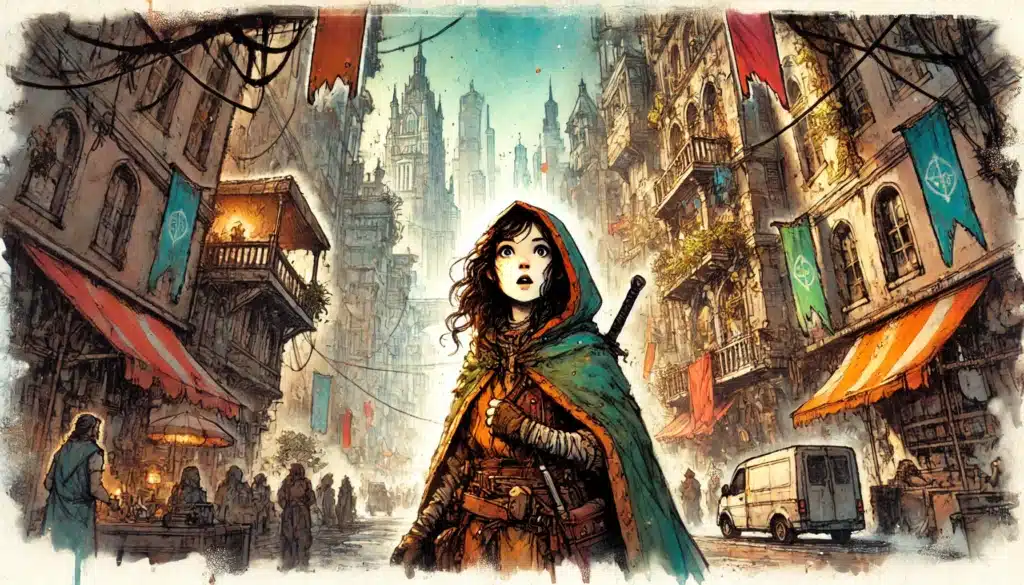
Regions and Factions of the Realms
When you embark upon a journey across the world of the Forgotten Realms, you find yourself treading on lands as diverse as their stories are rich. Faerûn, the largest continent in the setting, is as sprawling as it is varied, painting a vivid portrait of political intrigue, unique cultures, and mystical landscapes. Each corner of this expansive realm holds its own tales, challenges, and triumphs, begging to be explored by daring adventurers and cunning DMs alike. It’s not just the geography that’s vast, but the interplay of regional politics and culture creates a unique dynamic in every nook and cranny of this storied land.
Picture the iconic city of Waterdeep, the City of Splendors, where elite cabals and shifting alliances plot within seedy taverns and lush halls alike. Imagine Baldur’s Gate, a hub of commerce and adventure, where strangers in dark cloaks whisper of fortunes and fate. Or consider the Dalelands, spread across idyllic landscapes, ensconced by ancient secrets and vibrant, close-knit communities. These locations are not only physically distinct, but they also foster unique atmospheres and offer story hooks that weave into the fabric of your campaign.
A rich tapestry of cultures blankets the Realms, with each region offering its own allure. These regions become vibrant backdrops against which grand adventures unfurl. They are places of wonder, rife with hidden lore, and serve as stages upon which you, as the DM, can express varied narratives. Exploring a particular city-state or region in depth allows players to immerse themselves in a well-developed social and political environment. It is an invitation to delve deep into local mysteries and legends, creating intimate stories that breathe life into their adventures.
- Waterdeep: City of Splendors, renowned for its guild politics and intrigue.
- Baldur’s Gate: A city-state at the crossroads, bustling with trade and adventurers.
- Dalelands: Enclaves of freedom, each Dale unique with their utopian charm.
- Cormyr: Kingdom of intrigue, valor, and noble braggadocio.
- The Silver Marches: Haven in the north with strong alliances and hearty folk.
- The Sword Coast: Mecca for adventurers, filled with possibilities and danger.
- Anauroch: Desert frontier, home to mysteries and ancient empires.
- Thay: Mystery and conflict abound, as scheming Red Wizards vie for power.
- Icewind Dale: Frigid expanse, isolated with chilling stories of survival.
- Moonsea: Tolled in harsh weather, glory in its turbulent politics.
- Chult: Mystic thicket; jungles echo with ancient powers.
- The Heartlands: Rich and full of potential, the cradle of ambitions.
- Waterdeep: City of Splendors, renowned for its guild politics and intrigue.
- The Great Dale: Vast woodlands where nature’s whispers beckon exploration.
By focusing on one particular region at a time, DMs can extract meaningful stories, characters, and challenges, creating a world where players can become fully engaged and invested. Not only does this depth enhance narrative complexity, but it also ensures a campaign remains consistent in tone and setting, creating history that interweaves with player adventures. Ultimately, the choice of setting can be the cornerstone of an engaging campaign, where the threads of the past and present lie waiting for discovery.
Major Factions and Power Players
The enigmatic world of the Forgotten Realms is not merely shaped by its regions and landscapes, but also by the powerful factions and organizations that drive its narrative threads. From noble alliances to nefarious societies, these groups wield great influence, offering DMs a cornucopia of narrative opportunities. These factions, each vying for dominance and pursuing their own agendas, become essential players in the game’s stories, often serving as catalysts for the players’ actions.
Take, for instance, the enigmatic Harpers, a loose-knit organization of spies and spellcasters who strive to maintain balance and oppose tyranny. Or witness the machinations of the Zhentarim, a shadowy conglomerate driven by material wealth and influence, whose reach penetrates the darkest recesses of society. The Cult of the Dragon and their blasphemous adoration of dracoliches pose their own apocalyptic challenges, while the Lords’ Alliance stands as a coalition of powerful rulers determined to safeguard realms from chaos and disorder.
Try my AI Tabletop RPG generators...and an extensive library of content!
Each of these factions plays a crucial role in shaping the world, providing the means for DMs to propel stories with the vigor and verve that only living, breathing organizations can yield. Whether as allies, adversaries, or something in between, they interject tension and intrigue into the campaign, becoming the driving force behind epic quests, clandestine missions, and moral dilemmas.
| Faction Name | Alignment/Tone | Goals | Possible Uses in a Campaign |
|---|---|---|---|
| The Harpers | Chaotic Good | Maintaining balance, opposing tyranny | Secret missions, espionage networks |
| Zhentarim | True Neutral | Amassing power through wealth and influence | Mercenary work, trade manipulation |
| Lords’ Alliance | Lawful Good | Providing stability, defending against evil | Diplomatic missions, political intrigue |
| Cult of the Dragon | Chaotic Evil | Raising dracoliches, bringing draconic reign | Apocalyptic threats, relic quests |
| Red Wizards | Lawful Evil | Gathering arcane power, dominating through magic | Clash of magical ideologies, artifacts |
| The Emerald Enclave | Neutral | Preserving nature, protecting the wild | Wilderness encounters, nature conflicts |
| Knights of Myth Drannor | Chaotic Good | Safeguarding the Dale, benevolent heroics | Noble quests, battling encroaching dangers |
| The Order of the Gauntlet | Lawful Good | Upholding principles, combating evil incarnate | Vigilant crusades, demon-banishing tasks |
| The Harpers | Chaotic Good | Maintaining balance, opposing tyranny | Secret missions, espionage networks |
| The Zhentarim | Lawful Neutral | Amassing wealth through commerce | Espionage and trade manipulation |
| The Cult of Elemental Evil | Chaotic Evil | Creating cataclysms and pulling opposition | Elemental-themed adventures |
| The Kraken Society | Neutral Evil | Extorting and smuggling on the seas | Naval missions, artifact smuggling |
These factions are not just plot devices; they are immersive components of the Forgotten Realms’ tapestry, woven into the lives of its inhabitants. They serve to enrich the gaming experience, granting dimension to the players’ actions and embedding their narrative within the broader, interconnected world.
In conclusion, by introducing these major factions into your campaigns, you create dynamic storylines defined by allegiance, ambition, and conflict. The narrative pursuits driven by these organizations allow for recurring characters, quests, and intrigue that captivate players and add depth to their experiences. Let these groups stand as whispers in shadow or clarion calls in the sunlit halls of power, painting a vibrant, ever-evolving picture of a living world teeming with potential and fraught with peril.
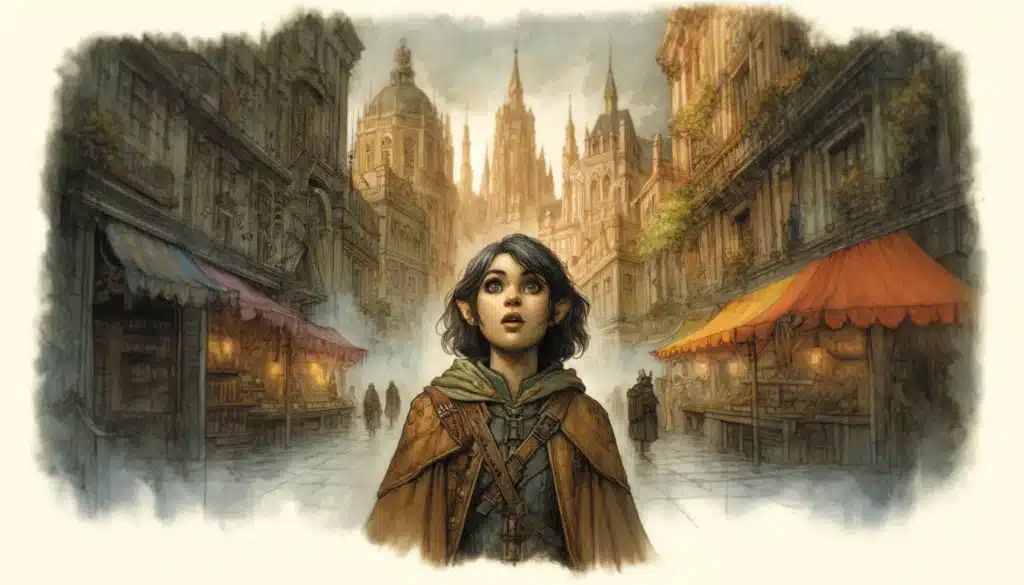
Forgotten Realms Lore: Building it More
As you close the tome upon this exploration of the Forgotten Realms, recall the vastness of its mythology, the depth of its history, and the individuality of its characters. Now armed with its lore, imagine not a set of rigid guidelines, but an extensive toolbox—a collection of stories, cultures, and inspirations to mold into whatever shape your narrative demands. Understanding the world’s nuances adds a layer of depth and consistency to campaigns. Yet, here’s the secret: accuracy is secondary to storytelling. The narrative you craft is your own to embrace and expound.
Embarking on a campaign within the Forgotten Realms should evoke wonder and curiosity—an encouragement to discover treasures new and old within this storied land. Rather than overwhelming yourself with the vastness of its lore, begin small. Pick a single element that sparks interest, whether it’s a region, a legendary figure, or a divine conflict, and allow that to organically guide the exploration of more expansive narratives within your campaign world.
Remember, each decision you make as a DM invites your players into the untrodden paths of your stories, transforming a mere setting into an arena of adventure. By rooting campaigns in the interactions, echoes, and mythos of the Realms, you provide tantalizing hints of legacy for players to sift through, untangling mysteries only they can unravel within the framework of your design.
Lean into the opportunity to remix or reinterpret canonical events or elements in ways that particularly illuminate your campaign’s themes. Want to explore an alternate ending to the Spellplague? Or twist a legendary figure’s allegiance to deepen the plot? The Realms are yours to sculpt. DMs are encouraged to take what they love and construct upon it, ever comfortable in the knowledge that there is no “wrong” path where narrative magic suffuses.
In wrapping up this guide, embrace the richness of the Forgotten Realms, where even a glimpse into its lore can lead to unexpected discoveries. Stand at the helm of your narrative journey and let your creativity weave new stories among well-trodden paths of legend, for even the most surface-level understanding of the settings promises deeply satisfying play. Dive into the infinite possibilities and craft tales that leave indelible marks on both your players and your world’s history.
⚔️ Fantasy RPG Random Tables Books
Make life as a Gamemaster easier…
If you play Dungeons & Dragons, Pathfinder, or other fantasy RPGs, this
RPG random tables series
is packed with encounters, NPCs, treasure, and more. Available in eBook or print—either way, you’ll have a wealth of adventure ideas at your fingertips.



